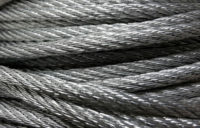Commodity Prices
Construction Materials Prices Continue to Decline in January

Construction input prices are down 2.7% from January 2015 and have now decreased for 14 consecutive months.
Photo by ENR
Construction input prices fell by 0.6% during January, according to the Bureau of Labor Statistics’ Producer Price Index. Construction input prices are down 2.7% from January 2015 and have now decreased on a year-over-year basis for 14 consecutive months.
The implication is that global deflationary forces have now been in place for well over a year, which has translated into growing volatility in many regional economies and in financial markets, say leaders with the Associated Builders and Contractors.
Prices for inputs to nonresidential construction have behaved similarly, falling 0.8% on a monthly basis and 2.7% on an annual basis. Inputs related to energy—crude petroleum, natural gas and unprocessed energy materials—plummeted again in January, contributing heavily to overall construction input price declines.
“A set of extraordinary circumstances has contributed to the ongoing decline in nonresidential construction input prices,” said ABC Chief Economist Anirban Basu. “Global commodity prices have been trending lower for months, with limited, sporadic exceptions. The end of China’s construction bonanza has certainly contributed.
“Decreased demand for inputs to construction ranging from copper to iron ore has served to flood global markets with excess supply, leading to falling prices. Significant oil production among OPEC and non-OPEC nations alike has collided with flat demand, helping to push energy prices lower,” Basu said.
“With Russia and Brazil remaining in recession and with the Chinese economy continuing to slow, input prices are likely to remain low for quite some time,” said Basu. “While it is possible that prices will begin to rise, increases are likely to be gradual, absent some coordinated action by producers to limit supply. Falling input prices certainly carry positives, but there are also large risks involved. Corporate bond defaults are up, particularly in the U.S. energy sector.
“Job losses continue among energy workers and several states are already in recession. These factors alone are unlikely to drive the economy into recession, but rising defaults could make capital more difficult to access going forward, which could limit construction starts,” Basu added.
Four key input prices expanded in January on a monthly basis:
- Nonferrous wire and cable prices expanded 2.1% on a monthly basis but fell 5.2% on a yearly basis.
- Iron and steel prices grew by 1.1% month-over-month but have declined 22.3% year-over-year.
- Softwood lumber prices expanded 0.7% for the month but fell 7.2% on an annual basis.
- Prices for prepared asphalt and tar and roofing and siding products increased by 0.5% on a monthly basis but are down 2% on a year-over-year basis.
Seven key input prices remained flat or declined on a monthly basis:
- Crude petroleum prices plunged 23.1% from December 2015 and are down 38.6% from January 2015.
- Unprocessed energy material prices fell 10% on a monthly basis and 26.4% on a yearly basis.
- Natural gas prices shed 3.5% for the month and are down 31% for the year.
- Fabricated structural metal prices products fell 0.9% month-over-month and 1.9% year-over-year.
- Prices for steel mill products fell 0.3% on a monthly basis and are down 19.2% on a yearly basis.
- Prices for plumbing fixtures and fittings fell 0.2% for the month and are up only 0.8% from the same time one year ago.
-
Concrete product prices remained unchanged on a monthly basis but have expanded 2.5% year-over-year.



